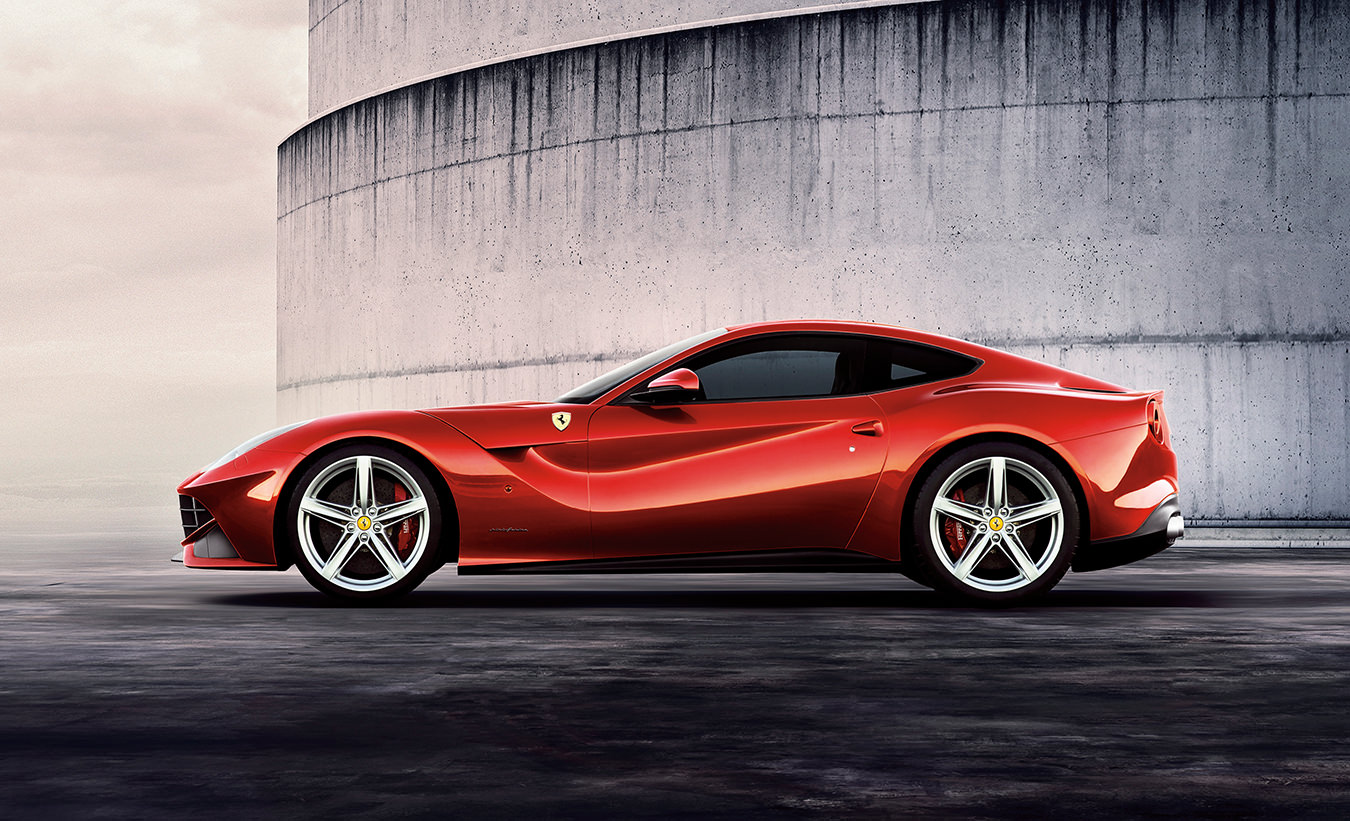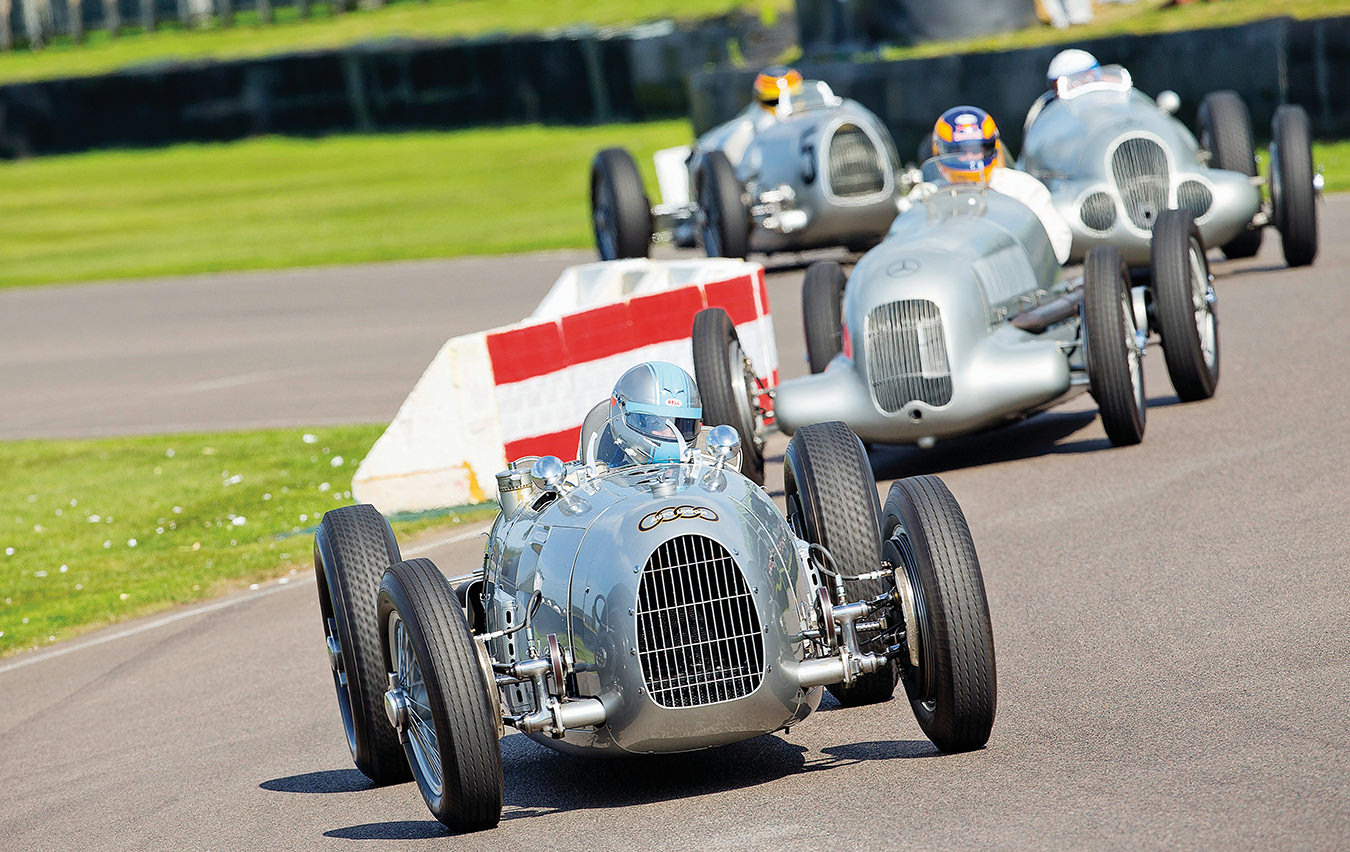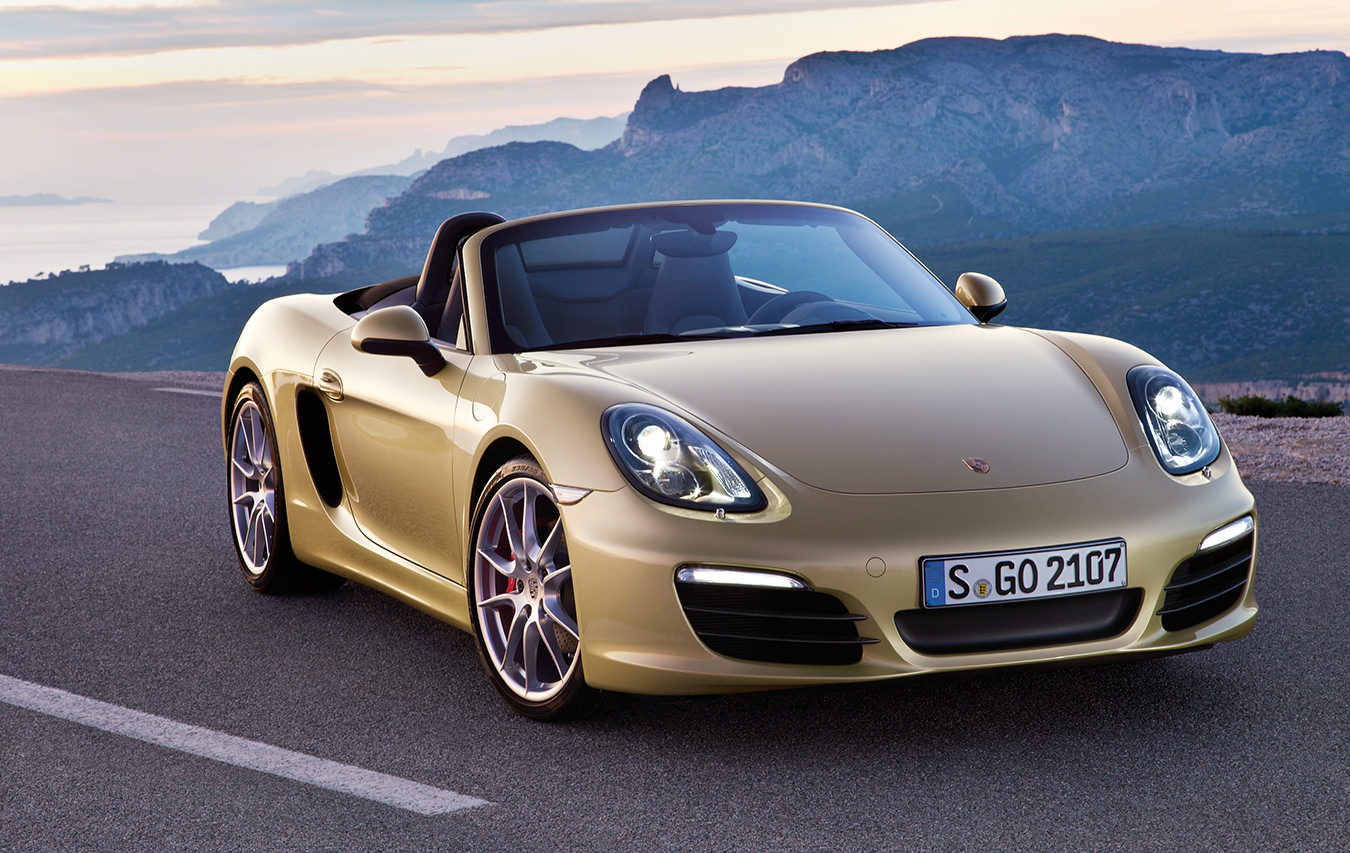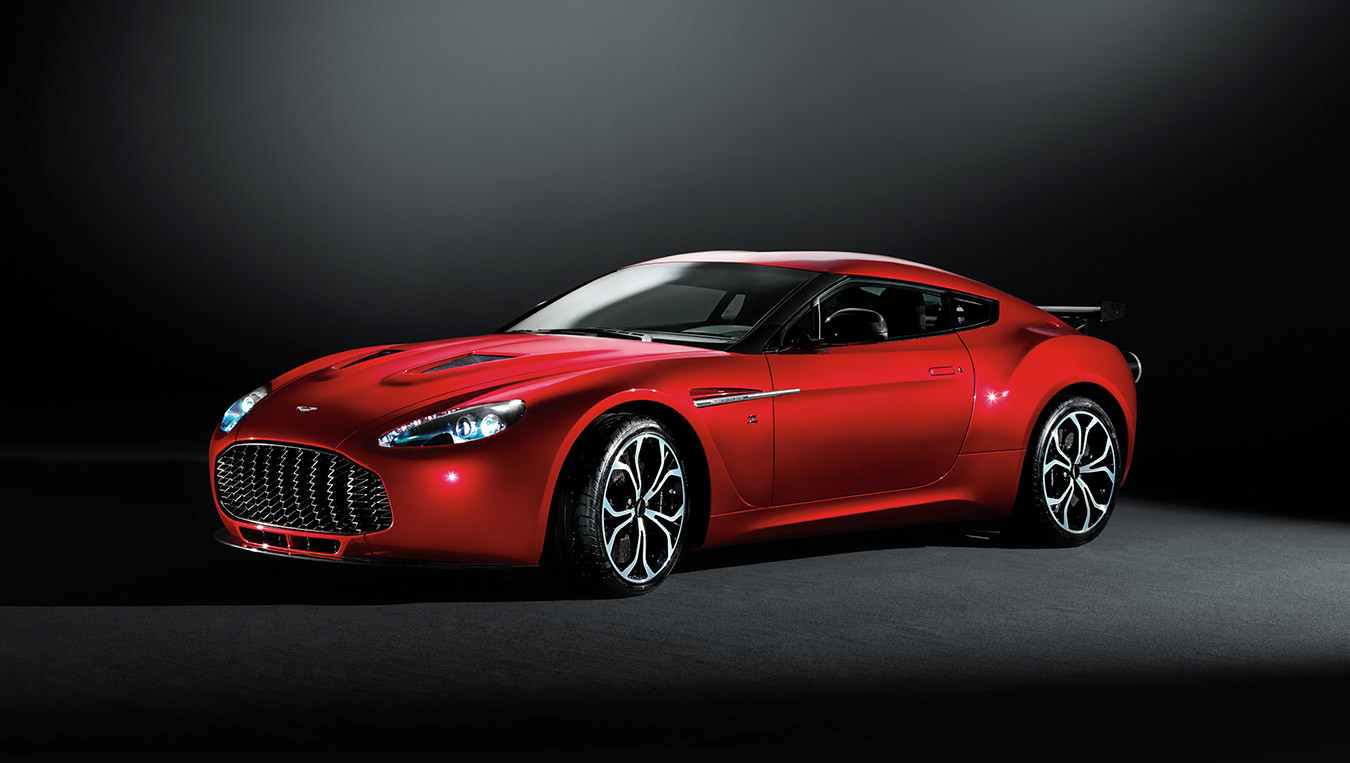The Jaguar F-Type
A distinguished bloodline.
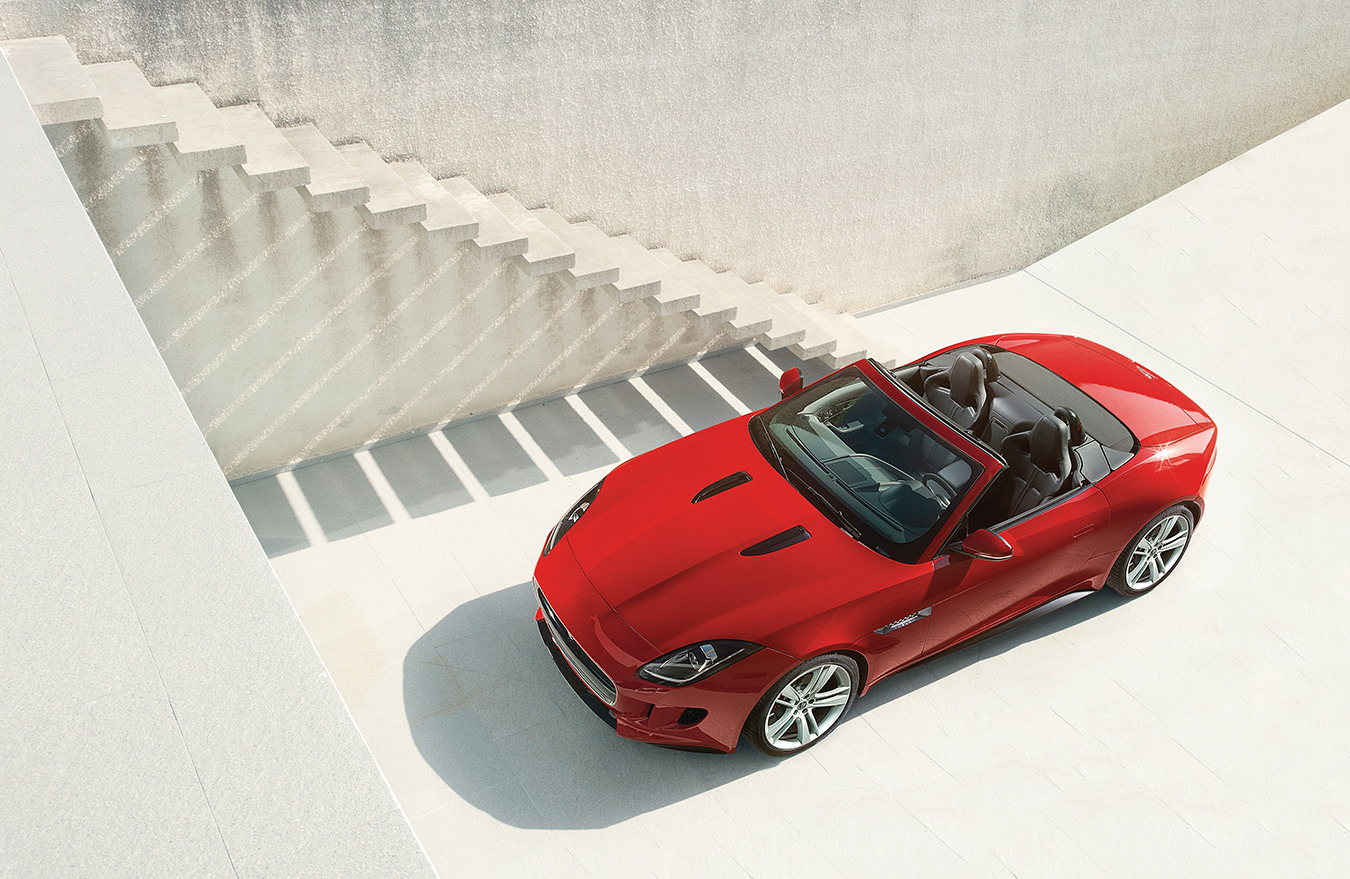
The Porsche 911 is celebrating its 50th anniversary this year. While the half-century mark sometimes represents the start of someone or something experiencing an inevitable, long, slow decline, this is not the case with the most venerable sports car on the planet.
On the contrary, 50 years in the world of sports car production means 50 years of testing, 50 years of racing, and 50 years of fine tuning. This is the reason that the Porsche 911 is the standard-bearer for sports cars.
But this is not an article about the Porsche 911.
This is an article about a new sports car that threatens the 911, a number of its variants, and a whole host of its so-called competitors. This is an article about the 2014 Jaguar F-Type.
This article is about the first all-new two-seat roadster to be released by the British marque in over 50 years. It’s a car that was a very long time coming, especially when you consider the enduring legacy of the most legendary Jaguars of the past—the SS100, the XK, and the everlasting E-Type, which debuted in 1961 to worldwide acclaim.
There are no illusions that the F-Type will sell thousands upon thousands of examples; that is not its raison d’être. Rather, this roadster has been tasked with becoming the new halo car for a brand seeking to reconnect with its iconic past and re-engage with its roots in racing.
As with all projects worth their salt, the process began at the drawing board with a clean sheet of paper. That paper was placed there by Ian Callum, director of design at Jaguar Cars, a gentleman very familiar with the way these types of things work.
He’s clearly passionate about cars, and he’s no slouch when it comes to career accomplishments. Prior to taking up his current position with Jaguar, Callum worked for Ford (penning such enthusiast cars as the Ford Escort RS Cosworth) and designed for Tom Walkinshaw Racing (where he was responsible for the Aston Martin DB7).
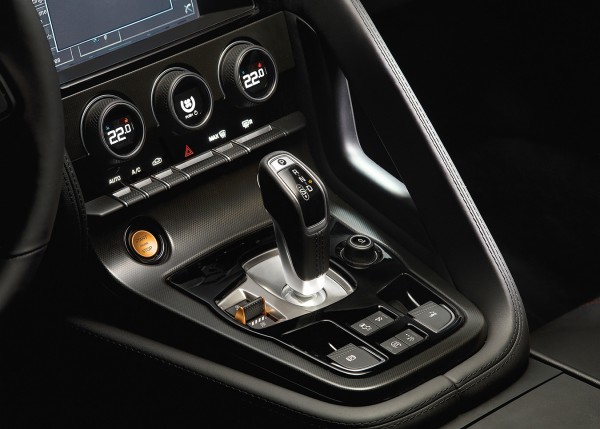
In 1999, he effectively rejoined Ford, but he worked on the Jaguar brand, which at the time was owned by the Detroit-based conglomerate. Since then, Callum has ushered in the handsome XK coupe and convertible (2006), the dynamic XF sedan (2008), and the stately XJ sedan (2009). Some nine years into the design chief’s tenure, Ford, struggling at the time, sold Jaguar (along with Land Rover and a few other nameplates) to Tata Motors of India. The rest is history in the making.
The purchase of the brand by yet another large manufacturer left many experts wondering what it meant for the future of Jaguar. Would the new owners push for a more conservative, mass-market approach to product development? Or would they give more leeway to the design and engineering teams? It was a time of great uncertainty.
Callum’s philosophy on design, which he shares on his personal website, is that “Design creates order out of chaos, but chaos is often required to simply be creative.” Perhaps it’s stretching the point to suggest that 2008 was chaotic for Jaguar, but there’s little doubt that it proved inspirational—the first all-new model to receive the go-ahead under the new ownership structure was the F-Type.
It’s more than a little remarkable that the Jaguar F-Type has come to be. It only has two seats. It’s a convertible. It does not run on any form of alternative fuel. It does not run on electricity. The F-Type is a throwback, an honest-to-goodness sports car for the modern era, an era that would seem to favour artifice over authenticity.
There are three distinct versions to choose from: the base F-Type, with its supercharged 3.0-litre V6 engine (340 hp; 332 lb-ft of torque); the F-Type S, with an identical engine tweaked for more performance (380 hp; 339 lb-ft); and the F-Type V8 S, powered by a supercharged 5.0-litre V8 engine (495 hp; 461 lb-ft).
The V8 S, by way of example, can launch from a standing start to 100 kilometres an hour in a scant 4.3 seconds and power on to a top speed of 300 kilometres an hour. Long story short, the thing is very fast—it leaps out of corners and chews through great expanses of pavement with ridiculous ease.
Power aside, there are other differences among the three models. The F-Type S has larger brakes and wheels than the base F-Type, as well as an active exhaust system that produces the sweetest of notes. The V8 version has even larger brakes and wheels, along with four tailpipes instead of two and an electronic limited-slip differential in place of the mechanical differential found on the V6 models.
But the fundamental engineering that underpins all three versions is the same: a superstrong, lightweight, aluminum-infused chassis, an all-aluminum suspension system, and close to perfect weight distribution from its front-engine, rear-wheel-drive layout. As such, any one of the three is a valid choice for the serious enthusiast. In this regard, the F-Type is a true triple threat.
The Jaguar F-Type is an honest-to-goodness sports car for the modern era, an era that would seem to favour artifice over authenticity.
There are other similarities to report. The steering is uniformly precise and precisely weighted. The suspension strikes an inspired balance between comfort and composure, even at elevated speeds. The quick-shifting eight-speed automatic transmission is just that—quick. The braking system is quite possibly the best available on a production car in terms of feel. The exhaust note is a symphony of mechanical sound.
To top it all off, the F-Type is a visually arresting sports car, and a number of very slick touches clearly identify it as a premium product. The door handles on the F-Type are recessed, the rear spoiler deploys automatically in excess of 100 kilometres an hour, and the power roof operates in just 12 seconds at speeds up to 48 kilometres an hour. When parked, top up or top down, the Jag is a collection of strong, unbroken lines that combine to create a forceful, muscular silhouette.
Of course, being a wise hand, Callum directed his team to expertly evoke Jaguar sports cars of the past without verging too far toward retrospection, which can verge on the maudlin. “We always start off with the principle of great visual architecture and beauty of line,” he says. “With a sports car, these two elements are even more important and to some degree exaggerated. Looking back at earlier Jaguar models, we can see exactly the same principles. In terms of detail, we have one or two elements that are specifically influenced by the past, such as the bonnet profile and the tail lamps.”
Inside, the theme of great visual architecture continues. The cabin is a very slick, comfortable, high-end driving environment with well-designed controls, a racy TFT LCD instrument panel, and very supportive sport seats. The paddle shifters, used to operate the eight-speed automatic, are well placed, and the steering wheel on which they are set is superbly tactile.
The centre console is topped by a bright LCD touch screen, eight inches in diameter, which houses the controls for the navigation and audio systems. The S models feature a configurable dynamic mode that is also displayed on this screen; this is used to adjust various parameters, including the adaptive suspension system.
Below this screen, there are a series of switches and controls, all logically organized. The gearshift, for those who prefer this more traditional mechanism for changing gears, is extremely responsive to the touch. Positioned around the shift lever are switches for the sport mode and automatic engine start-stop system (all versions of the F-Type feature both) as well as controls for the traction control system, the roof, the spoiler, and the active exhaust system. It all makes perfect sense for the driver because the design team has described the interior of the F-Type as being “unashamedly driver focused.”
Jaguar has produced a purebred sports car that is within striking distance of the Porsche 911. In one development cycle, the design and engineering teams at Jaguar have managed to cover close to a half-century’s worth of ground. The scale of the accomplishment is massive.
When asked how important this car is to the brand, Callum did not mince his words in the least: “The Jaguar brand has always been a sports car company, but unfortunately we have lacked a true two-seater for a number of years. By introducing the new F-Type, we have re-established our credentials.”
Well said.
Photos ©JW Photography.

